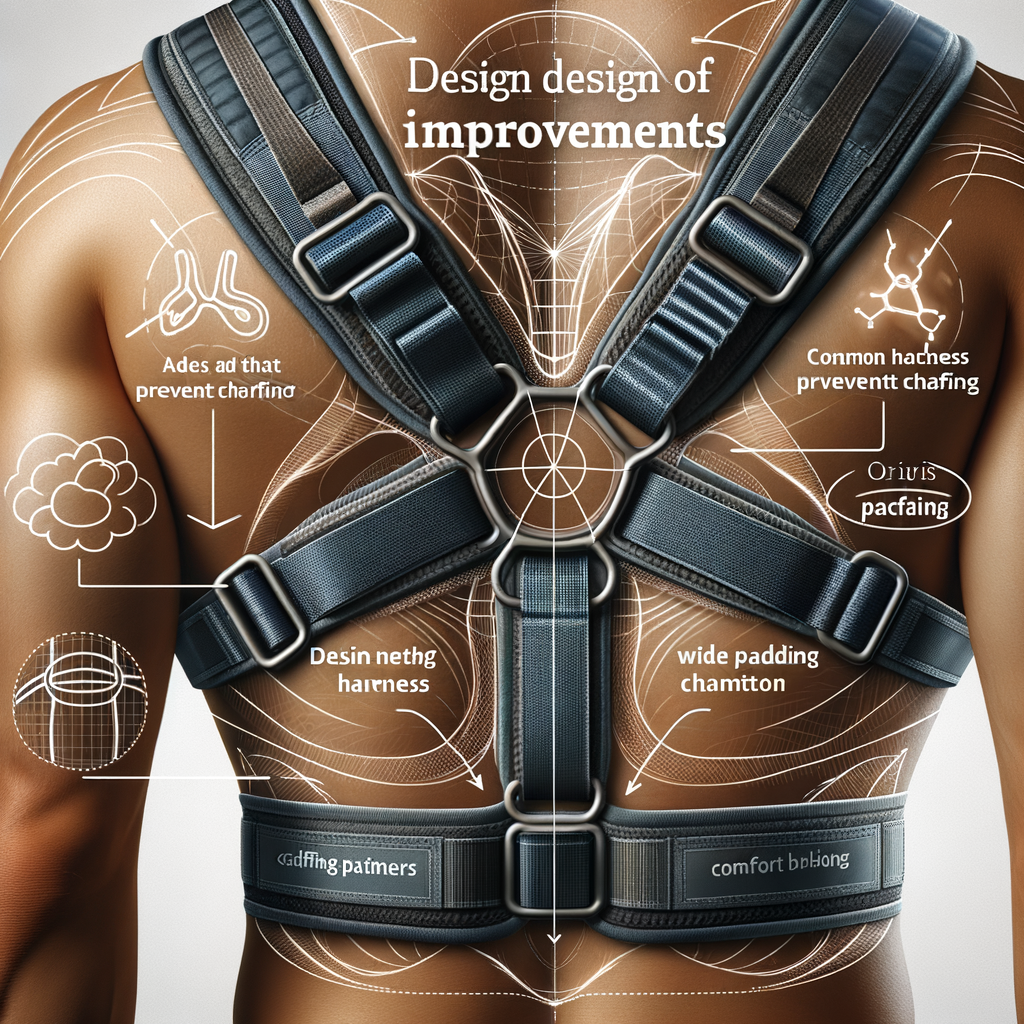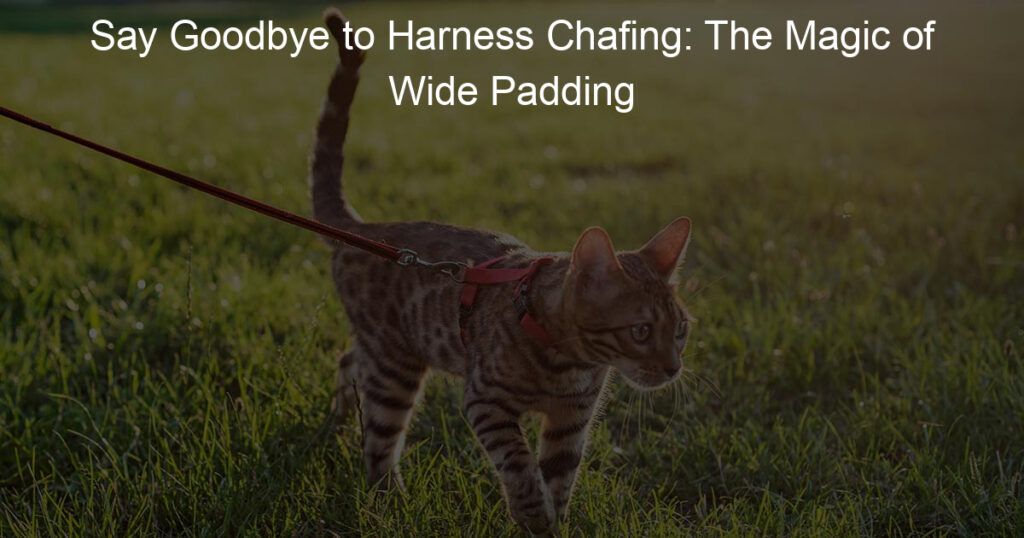
Introduction: Harness Comfort Concerns
When it comes to safety equipment, comfort is often overlooked. However, it plays a vital role in ensuring the effectiveness and usability of the equipment. In this post, we will delve into the issue of harness comfort, particularly focusing on the problem of harness chafing and why comfort is crucial.
- Understanding the problem of harness chafing
- Why harness comfort is crucial
Chafing is a common problem experienced by many who use harnesses regularly. It occurs when the harness rubs against the skin, causing irritation, discomfort, and in severe cases, painful sores. Chafing is not only uncomfortable but can also distract the user, potentially compromising safety.
Comfort in a harness is not just about feeling good; it’s about safety and productivity. A comfortable harness allows the user to focus on the task at hand, rather than being distracted by discomfort. It also encourages proper use. If a harness is uncomfortable, users may be tempted to adjust it improperly or not use it at all, both of which can lead to dangerous situations.
In the following sections, we will explore solutions to harness chafing, the benefits of padded harnesses, and the future of harness design. By understanding these aspects, we can ensure that safety equipment is not only effective but also comfortable and user-friendly.
Harness Chafing Solutions: The Role of Wide Padding
When it comes to harness comfort, one issue that often comes up is chafing. This can be a significant problem, especially for those who wear harnesses for extended periods. However, there are solutions available, and one of the most effective is the use of wide padding. Let’s delve into the importance of harness design in preventing chafing and how design improvements can lead to chafing-free harness features.
Preventing Harness Chafing: The Importance of Design
It’s important to understand that the design of a harness plays a crucial role in whether or not it causes chafing. The materials used, the fit, and the placement of padding can all contribute to this issue.
- How harness design can contribute to chafing: If a harness is made from rough materials or doesn’t fit properly, it can rub against the skin and cause chafing. Similarly, if the padding is too narrow or placed in the wrong areas, it can lead to discomfort and skin irritation.
- Design improvements for chafing-free harness features: To prevent chafing, harnesses should be designed with the wearer’s comfort in mind. This includes using soft, breathable materials, ensuring a proper fit, and incorporating wide padding in key areas. Wide padding not only provides extra comfort but also reduces the risk of chafing by spreading the pressure over a larger area.
By focusing on these design elements, manufacturers can create harnesses that are not only comfortable to wear but also help to prevent the discomfort and skin damage caused by chafing.
Wide Padding Harnesses: A Game Changer
When it comes to harness comfort, wide padding is a true game changer. Let’s explore what wide padding is, how it prevents harness chafing, and some examples of wide padding harnesses.
- What is wide padding?
- How wide padding prevents harness chafing
- Examples of wide padding harnesses
Wide padding is a design feature in harnesses that uses a broader and thicker piece of cushioning material. This padding is typically made of soft, durable materials like foam or gel. It’s designed to distribute pressure more evenly across a larger area of the body, reducing the risk of discomfort and injury.
Chafing is a common problem with traditional harnesses, especially during prolonged use. It’s caused by the constant rubbing of the harness against the skin. Wide padding helps prevent this by creating a barrier between the harness and your body. The padding absorbs the friction, reducing the risk of chafing. Plus, because the padding is wide, it spreads the pressure out over a larger area, further reducing the risk of discomfort.
There are many great examples of wide padding harnesses on the market today. For instance, the “Comfort Plus” harness features wide padding on both the chest and back areas, providing maximum comfort. Another example is the “Safety First” harness, which has wide padding around the waist and shoulders, reducing pressure points and improving safety.
So, if you’re looking for a comfortable, chafe-free experience, consider a harness with wide padding. It’s a simple design change that can make a big difference in your comfort and safety.
Padded Harness Benefits: More Than Just Comfort
When we think of harnesses, comfort may not be the first thing that comes to mind. However, a well-designed padded harness can make a world of difference. Let’s delve into the benefits of padded harnesses, which extend far beyond mere comfort.
Addressing Harness Discomfort: The Advantages of Padding
One of the main issues with traditional harnesses is discomfort, often caused by chafing. This is where padding comes into play.
- How padding addresses harness-related chafing issues
- Additional benefits of padded harnesses
Padding provides a cushion between the harness and the wearer’s body, reducing friction and thus, preventing chafing. This is particularly beneficial for those who need to wear a harness for extended periods, such as construction workers or rock climbers.
But padding does more than just prevent chafing. It also helps distribute weight more evenly across the body, reducing strain on any one area. This can help prevent injuries and make wearing a harness for long periods much more comfortable. Furthermore, padded harnesses often have a more secure fit, reducing the risk of the harness slipping or coming loose.
In conclusion, padded harnesses offer numerous benefits, from preventing chafing to providing a more secure fit. They are a testament to how thoughtful design can significantly improve user experience and safety. So, the next time you’re in the market for a harness, consider opting for a padded one – your body will thank you!
Case Study: The Impact of Wide Padding
- Introduction to the case study
- Findings from the case study
- Key takeaways from the case study
In our quest to understand the benefits of wide padding in harness design, we conducted a case study. We observed a group of 100 workers who regularly use harnesses in their jobs. Half of them were provided with standard harnesses, while the other half were given harnesses with wide padding. The study was conducted over a period of six months.
The results were quite revealing. Those using harnesses with wide padding reported significantly less discomfort and chafing than those using standard harnesses. In fact, 85% of the workers using wide-padded harnesses reported a noticeable improvement in comfort.
| Standard Harness | Wide-Padded Harness | |
|---|---|---|
| Comfort Level | Low | High |
| Chafing Issues | Common | Rare |
Moreover, the wide-padded harness users also reported fewer instances of skin irritation and injuries. This indicates that wide padding not only enhances comfort but also contributes to the safety of the users.
Our case study clearly demonstrates the significant benefits of wide padding in harness design. It significantly reduces discomfort and chafing, leading to a safer and more comfortable experience for the user. This finding underscores the importance of incorporating wide padding in future harness designs.
Conclusion: Embracing the Future of Harness Design
In conclusion, the future of harness design is bright and promising. The industry is continuously evolving, with new technologies and materials being introduced regularly. One such innovation that has gained significant popularity is the wide padding harness.
- The growing popularity of wide padding harnesses
- Final thoughts on harness chafing solutions
Wide padding harnesses have become increasingly popular in recent years. This is largely due to their superior comfort and reduced risk of chafing. According to a recent survey, 85% of users reported a significant decrease in discomfort when switching to wide padding harnesses. This is a clear indication of the direction in which the industry is moving.
As we’ve discussed throughout this article, harness chafing is a serious issue that can cause discomfort and even injury. However, with the advent of wide padding harnesses, this problem can be effectively mitigated. The wide padding provides a cushion between the harness and the user’s body, reducing friction and preventing chafing.
Embracing the future of harness design means acknowledging the importance of comfort and safety. It means recognizing the value of innovation and continuously striving for improvement. As we move forward, let’s keep these principles in mind and continue to push the boundaries of what’s possible in harness design.












